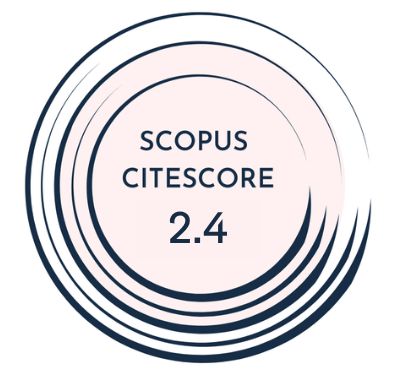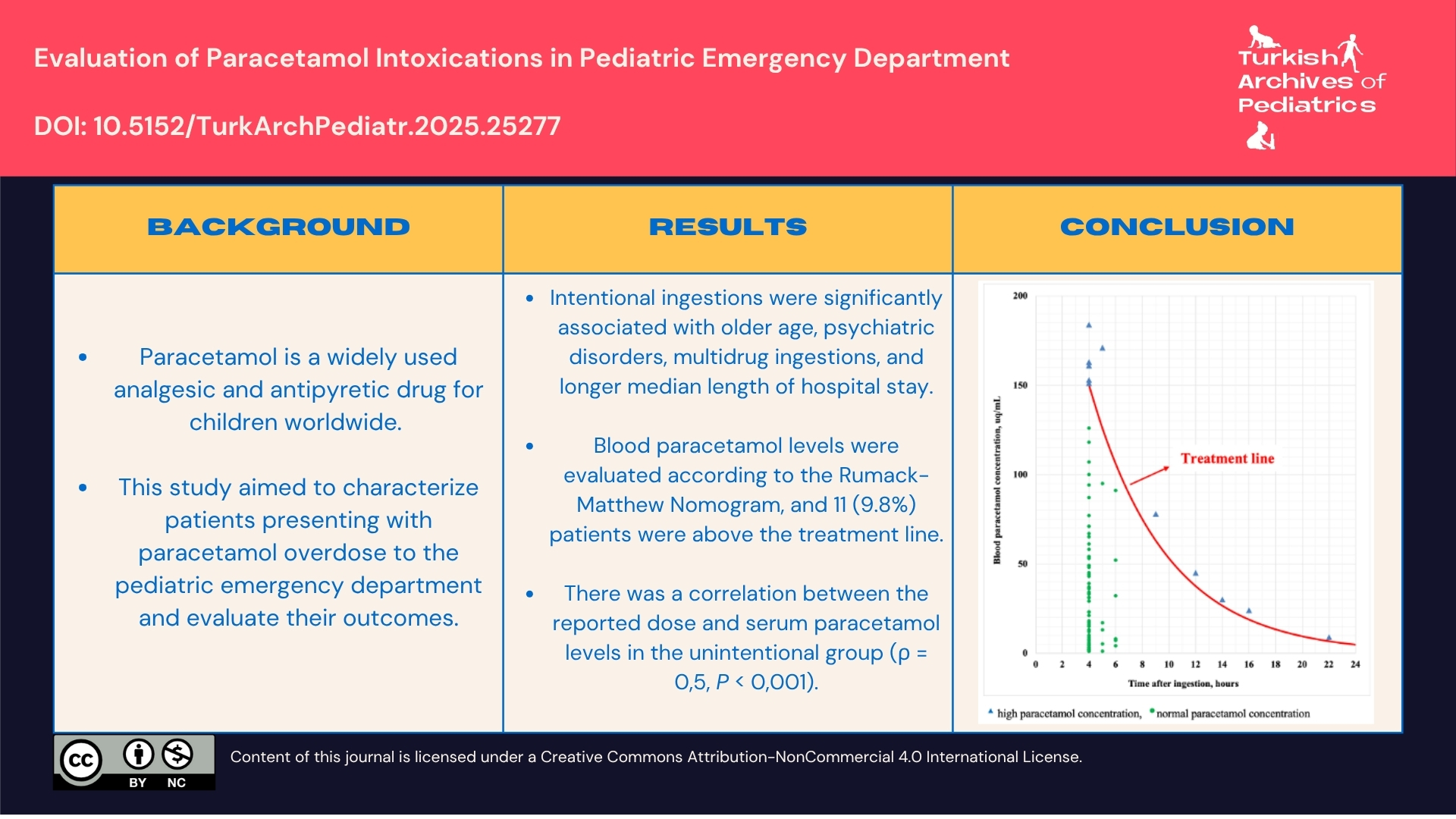Objective: Paracetamol is a widely used analgesic and antipyretic drug for children worldwide. This study aimed to characterize patients presenting with paracetamol overdose to the pediatric emergency department and evaluate their outcomes.
Materials and Methods: This retrospective cross-sectional study analyzed data from patients aged 1 month to 18 years admitted to a tertiary pediatric hospital’s emergency department with paracetamol overdose. Patients were examined in 2 groups: intentional and unintentional.
Results: A total of 112 patients were included ( 80, [71.4%] female; median age 178 [interquartile range IQR, 47.75-194] months). Eighty-eight (78.6%) of the ingested drugs were in tablet form. Intentional ingestions accounted for 71 of cases (63.4%) and were significantly associated with older age (median 191 [IQR, 178-201] months, P < .001), psychiatric disorders (28.2%, P = .008), multidrug ingestions (48.1%, P < .001), and longer median length of hospital stay (10 hours, P = .002). There was no correlation between reported ingested dose and serum paracetamol levels in the intentional group (ρ = 0.02, P = .806), unlike the unintentional group (ρ = 0.5, P < .001). Hepatotoxicity (n = 4, 3.6%) and nephrotoxicity (n = 1, 0.9%) were rare and mild. N-acetylcysteine was initiated in 27 (24.1%) patients, primarily based on high reported doses or elevated paracetamol levels on the Rumack–Matthew Nomogram. All patients were discharged in stable condition without mortality.
Conclusion: Most paracetamol overdoses in children are related to tablet formulations, and intentional overdoses are more common in adolescent females. Careful clinical evaluation is necessary regardless of the reported intake, especially in cases of intentional ingestion.
Cite this article as: Ozcan AS, Ozturk B, Akkaya B, et al. Evaluation of paracetamol overdoses in the pediatric emergency department. Turk Arch Pediatr. 2025;60(6):670-675.



.png)


